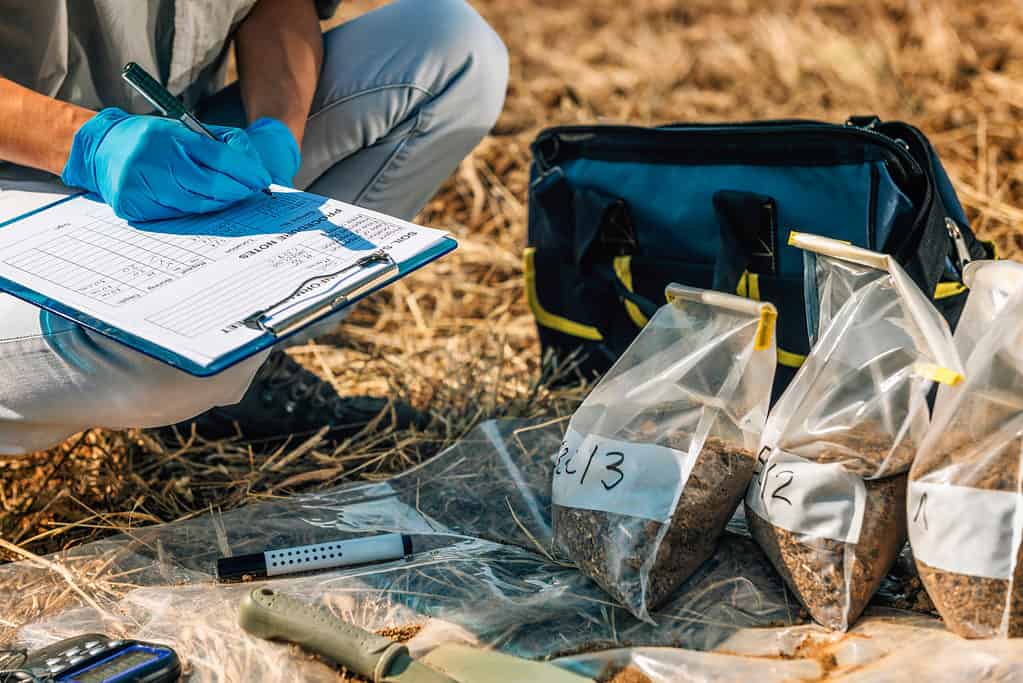Tag: Design of Experiments

Using Fractional Factorial Design of Experiments Saved Almost $800,000
Published:How can the fractional factorial design of experiments benefit you? A global beverage company faced a persistent issue in its production line: excessive foaming while bottling 1-liter apple juice bottles. The foaming caused significant inefficiencies, including improperly filled bottles, contamination risks, and increased rework due to rejected products. Despite attempts to address the problem through […]
Read more »
Design of Experiments: A Primer
Published:Design of experiments (DOE) is a systematic method to determine the relationship between factors affecting a process and the output of that process. In other words, it is used to find cause-and-effect relationships. This information is needed to manage process inputs in order to optimize the output. An understanding of DOE first requires […]
Read more »
Interaction: See the Effects on Your DOE
Published:The phrase “it depends” sums up the concept of interaction in the context of Design of Experiments. Interaction is when the effect of one factor on a response variable depends on the level or setting of another factor.
Read more »
Exploring the Benefits of Fractional Factorial DOE
Published:Fractional factorial DOE is a cost- and time-effective designed experimentation statistical tool for understanding the impact of your process inputs on your process outputs.
Read more »
Center Points: Finding the Mathematical Center of Your Data
Published:The use of center points in your designed experiments can be valuable in determining the actual relationship between your input factors and your response variable. Let’s explain this in a little more detail.
Read more »
Process, Product, and People: The 3P Approach to Quality
Published:Quality management should be a holistic approach. Process, product, and people are the three key elements of a company’s quality system and all of them need to be focused on for an overall improvement in performance. Why It Matters So, why consider this approach for your quality management? While there are many approaches […]
Read more »
Importance of Test Plans/Test Protocol: Go Into Testing Prepared
Published:Test plans, also called test protocols, are formal documents that typically outline requirements, activities, resources, documentation, and schedules to be completed. Some form of test plan should be developed before any test. The key reasons for developing test plans are: The Importance of a Plan Before embarking on any testing, experimentation, and so […]
Read more »
What are Replicates? A Complete Guide
Published:When doing Design of Experiments (DOE), replicates become an important consideration for improving the accuracy of your experiment. Let’s learn a little more about replicates. In Design of Experiments (DOE), a replicate is a single repetition or run of an experiment, with all conditions and factors kept constant except for the treatment being […]
Read more »
Most Practical DOE Explained: Tips and Tricks to Design Your Experiments
Published:For purposes of learning, using, or teaching a design of experiments (DOE), one can argue that an eight-run array is the most practical and universally applicable array that can be chosen. There are several forms of and names given to the various types of these eight-run arrays (e.g., 2^3 Full Factorial, Taguchi L8, […]
Read more »
Screening Design of Experiments: Cutting Costs, Not Quality
Updated:Your design of experiments (DOE) has many variables and a tight budget. How can you balance the process information you need with the limitations of time and resources? You might try using a screening DOE.
Read more »
Plackett-Burman Experimental Design: When and How to Use It in Your DOE
Published:Plackett-Burman experimental design is used to identify the most important factors early in the experimentation phase when complete knowledge about the system is usually unavailable. Developed in 1946 by statisticians Robin L. Plackett and J.P. Burman, it is an efficient screening method to identify the active factors using as few experimental runs as […]
Read more »
Maximizing Efficiency and Accuracy with Design of Experiments
Updated:A design of experiments (DOE) is a set of powerful designed experimentation statistical tools for understanding the impact that varying your process inputs will have on the outputs of your process.
Read more »
Case Study: Using DFSS and DOE to Increase Product Reliability
Published:A medical devices company, developing technology to enable smaller medical devices, launched a substrate development effort as part of a larger-scale technology and product development effort. The substrate development effort involved predicting the stress caused by the laser welding process to ensure product reliability. In this Design for Six Sigma (DFSS) case study, design and […]
Read more »
Design of Experiments to Optimize Any Process or Product [VIDEO] – With Mark Kiemele
Published:As the saying goes, if all you have is a hammer in your toolbox, everything looks like a nail. But if you had a torque wrench or a power drill with a box of bits, you are likely to be much more effective. Design of experiments (DOE) is one of those specialized and sophisticated tools […]
Read more »
Optimize Attribute Responses Using Design of Experiments
Published:The objective of a design of experiments (DOE) is to optimize the value of a response variable by changing the values, referred to as levels, of the factors that affect the response. Although often a response is continuous in nature, there are some cases in which the response falls in the attribute category (e.g., pass/fail, […]
Read more »
Design of Experiments for Software Testing
Published:When DOE (design of experiments) is used for software testing, there is a large amount of savings in testing time and cost. Various users in automotive, telecommunication and defense industries report big productivity improvements to their traditional testing methods. This success is due to two major important factors: 1) focused attention on the usage of […]
Read more »
Three Romeos and a Juliet – An Early Brush with DOE
Published:Three young men, each being infatuated with the same woman, agree to conduct a design of experiment (DOE) of love. Statistics and romance intertwine in this entertaining and educational real-life story. Which bachelor will end up with the young lady’s hand? Will the DOE prove successful? Peeping into my youthful past, I recall three close […]
Read more »
The Importance of Statistical Thinking
Published:Six Sigma is the buzzword of today. Companies big and small talk about it and numerous success stories further advertise its relevance in today’s challenging business environment. Debates on its emergence as a strategic initiative have created critics who consider it old wine in a new bottle and loyal followers willing to swear by it. […]
Read more »
Save Time With Fractional Factorial DOEs
Published:Design of experiments (DOE) is a key tool in the Six Sigma methodology. DOEs help improve processes in a quantum fashion, and is an approach for effectively and efficiently exploring the cause and effect relationship between numerous process variables (Xs) and the output or process performance variable (Y). DOE helps in the following ways: The […]
Read more »
From Quality Control to Quality Improvement
Published:Everybody is familiar with control charts for quality control. An example of a control chart is shown below. In the example a packaging company who made blisters for the pharmaceutical industry found the process average for a critical characteristic was out of control. There were some ideas about possible causes but, as in most other […]
Read more »
Reducing Variability With DOE
Published:Six Sigma is the new rallying cry for quality improvement in the process industry. For example, Dow aims to generate an extra $1.5 billion per year in profits after training 50,000 of their employees on the methods of Six Sigma.3 Statistical tools play a key role in achieving savings of this magnitude. In fact, sigma […]
Read more »
Design For Six Sigma Roadmap
Published:In the 21st century, new technologies will be developed and improved and will eventually be obsolete for the need of more advanced technologies. In this dynamically changing world, product cycles are expected to last for just a few months. To meet these demanding requirements product developers have to develop products in the shortest amount of […]
Read more »
Decision-Making with Cause-and-Effect Analysis and DOE
Published:Business process improvements, the grail of any company’s operations, translate directly into better profits by cutting costs and increasing competitiveness at the same time. In many cases, business process improvements have accelerating cumulative effects on company profits. If an insurance company, for example, can underwrite policies faster or settle claims faster, it is providing better […]
Read more »
Designing and Analyzing Experiments with Mixtures
Published:In the development phase of Design for Six Sigma (DFSS), practitioners who work in domains such as medical devices, pharmaceuticals, foods, material composition and semiconductors frequently deal with experiments to determine optimal ingredient mixtures for desired products. The factors in a mixture experiment are the ingredients or components of a mixture, and the response is […]
Read more »